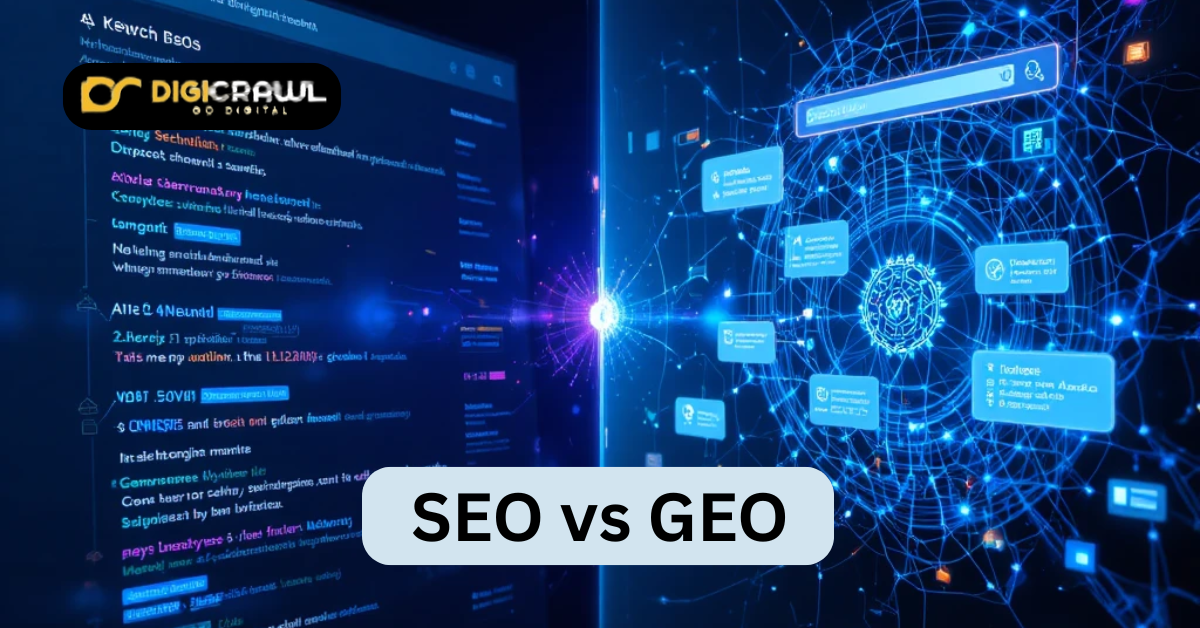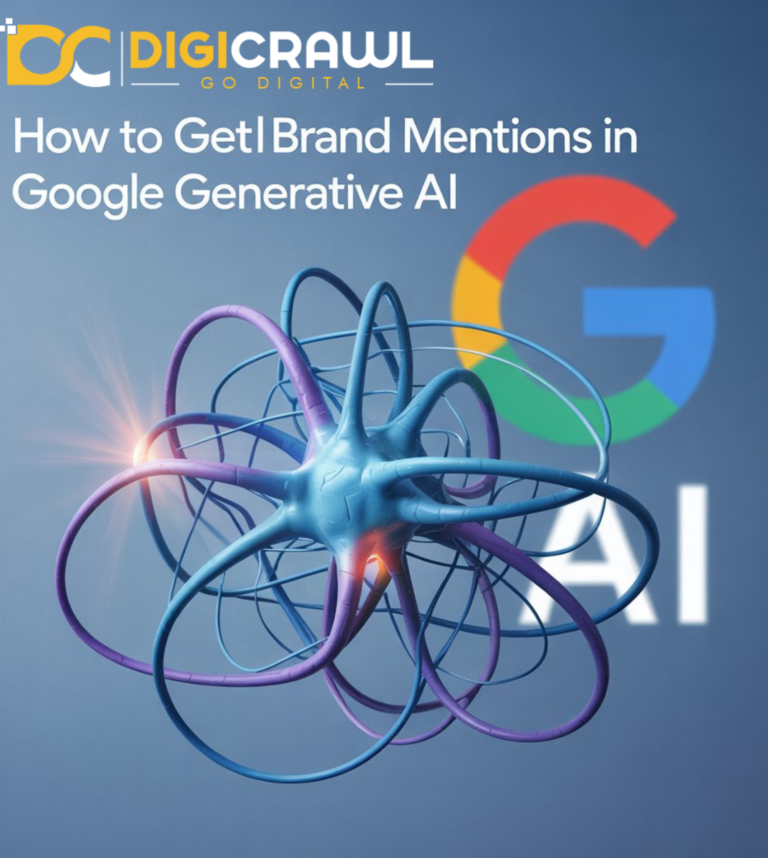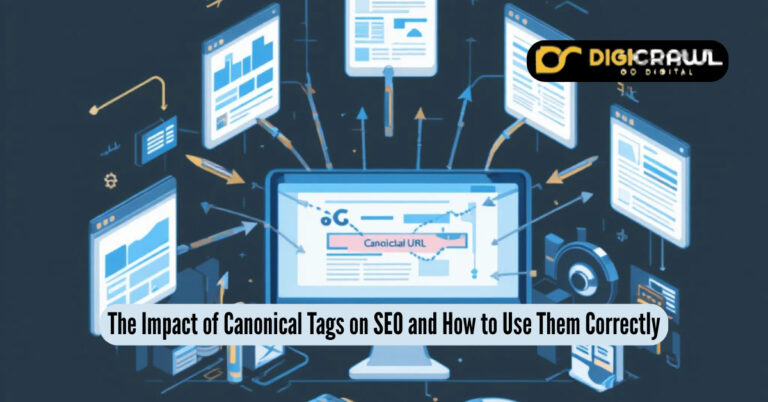SEO vs GEO: Why Generative Engine Optimization Is Essential for Search Rankings in the AI Era
Discover how AI-powered search is transforming visibility strategies and why optimizing for generative engines is no longer optional.
The rules of digital visibility have been rewritten.
For over thirty years, search engine optimization dominated the conversation. Marketers obsessed over keyword density, link profiles, and crawl budgets. Success meant occupying the coveted top positions on results pages.
But here’s the reality: the game has fundamentally changed.
Inside This Article
- Understanding Generative Engine Optimization
- Core Strategies for AI Visibility
- Content Techniques That Work for Generative Engines
- The Business Case for Adapting Now
- Building Competitive Advantage Through GEO
Modern search increasingly happens through AI interfaces. When someone asks a question, they’re no longer satisfied with ten blue links. They expect intelligent, synthesized responses that pull insights from authoritative sources and deliver them conversationally.
The implications are profound: securing a ranking isn’t the end goal anymore.
In this AI-first environment, brands need a new approach. Generative Engine Optimization represents that evolution—a strategic framework designed specifically for an era where machines curate and deliver information before users ever click through.
Let’s explore how to implement this effectively.
Understanding Generative Engine Optimization
Generative Engine Optimization refers to the strategic practice of positioning your content so that artificial intelligence systems recognize it, comprehend it accurately, and reference it when generating responses.
The Fundamental Shift in How Search Works
Traditional search technology operates through indexing and ranking algorithms. Crawlers systematically catalog web pages, then apply ranking factors to determine display order.
AI-powered search functions completely differently. These systems absorb vast repositories of information during training phases, then leverage that knowledge to construct original responses. Rather than simply pointing to sources, they synthesize information on the fly.
What Powers AI-Generated Answers?
The content feeding these AI systems comes from diverse digital sources: websites, user reviews, business directories, community forums, social platforms, and proprietary brand channels.
This fundamentally transforms the visibility equation. Success no longer hinges exclusively on keyword targeting or backlink accumulation.
Requirements for AI Visibility
To appear in AI-generated responses and enhanced search features, your content needs three qualities:
Authoritative presence across trusted digital properties—your website, business profiles, product listings, customer reviews, and industry platforms.
Architectural clarity with semantic richness that helps AI systems parse meaning and extract relevant information efficiently.
Consistency and credibility throughout the digital ecosystem, with aligned messaging and verifiable information across all touchpoints.
The objective: position your brand as the definitive source when AI systems formulate answers, ensuring visibility both within synthesized responses and accompanying citations.
Core Strategies for AI Visibility
Succeeding with generative engines requires understanding their content selection criteria and decision-making processes.
Research reveals three foundational principles that consistently improve visibility in AI-generated content:
1. Prioritize Architectural Excellence
AI systems strongly favor content with clear organization and logical structure. Well-defined headings, concise bullet formatting, data tables, and executive summaries enable efficient information extraction and reassembly into conversational outputs.
2. Establish Credibility Markers
These systems reward factual precision, cross-source consistency, and transparency. Discrepancies between your website, public profiles, and third-party mentions erode trustworthiness. Meanwhile, citing authoritative sources, referencing verified data, and demonstrating subject matter expertise significantly increase citation probability.
3. Embrace Semantic Sophistication
Modern AI relies less on exact keyword matches and more on contextual understanding. Content incorporating synonyms, related terminology, and natural language variations adapts more effectively to diverse query patterns—particularly important as AI-driven searches tend toward conversational phrasing rather than transactional keywords.
Content Techniques That Work for Generative Engines
Here are three critical tactics for creating content optimized for AI visibility:
1. Deliver Comprehensive, Intent-Focused Answers
AI systems privilege thorough responses that address core questions along with logical extensions and related inquiries.
When creating content, anticipate the full spectrum of user intent. If explaining content marketing ROI, proactively address connected questions: measurement methodologies, relevant performance indicators, attribution models, and timeline expectations.
Aligning with complete user intent—not just primary keywords—positions your content as the optimal source when AI systems evaluate available information.
2. Demonstrate Expertise, Authority, and Trustworthiness
Credibility is inseparable from effective optimization. AI systems actively seek identifiable trust indicators:
- Clear author attribution with relevant credentials
- Real-world examples and practical case applications
- Transparent methodology for statistics and claims
- Verifiable references and source documentation
- Professional presentation and editorial quality
Your content should inspire confidence—information that feels reliable enough for AI systems to confidently incorporate into their responses.
3. Design for Dual Accessibility
Beyond basic clarity, specific content formats enhance both human comprehension and machine parsing. Frequently asked questions, step-by-step guides, comparison frameworks, and structured lists serve both audiences effectively.
Many proven search optimization techniques remain powerful in this new context:
- Descriptive alternative text for images
- Summary sections and key takeaways in long-form pieces
- Structured data markup where applicable
- Logical hierarchy and clear navigation
This dual-optimization approach maximizes both discoverability during AI training and reusability when generating responses.
The Business Case for Adapting Now
Still questioning whether generative engine optimization deserves strategic attention? Consider the data: three-quarters of problem-solving searches now trigger AI-enhanced results, and AI-generated overviews appear in more than ten percent of queries in major markets.
These AI-synthesized responses are rapidly becoming standard user expectations. The distinction between “searching” and “conversing” continues to dissolve.
Ignoring this shift risks more than traffic decline—it means complete invisibility in the answer layer where user trust forms and decisions crystallize.
Conversely, organizations embracing generative optimization gain substantial advantages:
Protecting brand visibility where AI systems increasingly control attention and information flow.
Future-proofing digital strategy as search continues evolving toward AI-mediated experiences.
Improving content ROI by aligning creation with both human preferences and machine logic.
Make no mistake: this represents a fundamental restructuring of digital visibility. Traditional optimization remains critical but is no longer sufficient alone. Generative optimization provides the complementary layer—ensuring your content gets cited, trusted, and incorporated by the AI systems increasingly mediating information access.
Building Competitive Advantage Through GEO
The generative engine era has arrived. For marketing leadership and digital strategists, the opportunity lies in adapting faster than competitors—aligning content with generative search standards while maintaining traditional optimization excellence.
Winning visibility in this environment requires:
Strategic auditing of existing content for generative optimization readiness.
Systematic enhancement of clarity, trust signals, and semantic depth across all properties.
Active monitoring of brand presence in AI overviews, chatbot responses, and generative search features.
Organizations investing in generative optimization today will shape how tomorrow’s answers are constructed—and whose information gets amplified in an AI-first world.
The question isn’t whether to adapt. It’s how quickly you’ll move.
And if you are looking for a digital agency that can handle SEO and GEO for your business. DigiCrawl is one of the providers of the best digital marketing services in Islamabad. You can also explore our SEO services in Islamabad to achieve your SEO goals.







